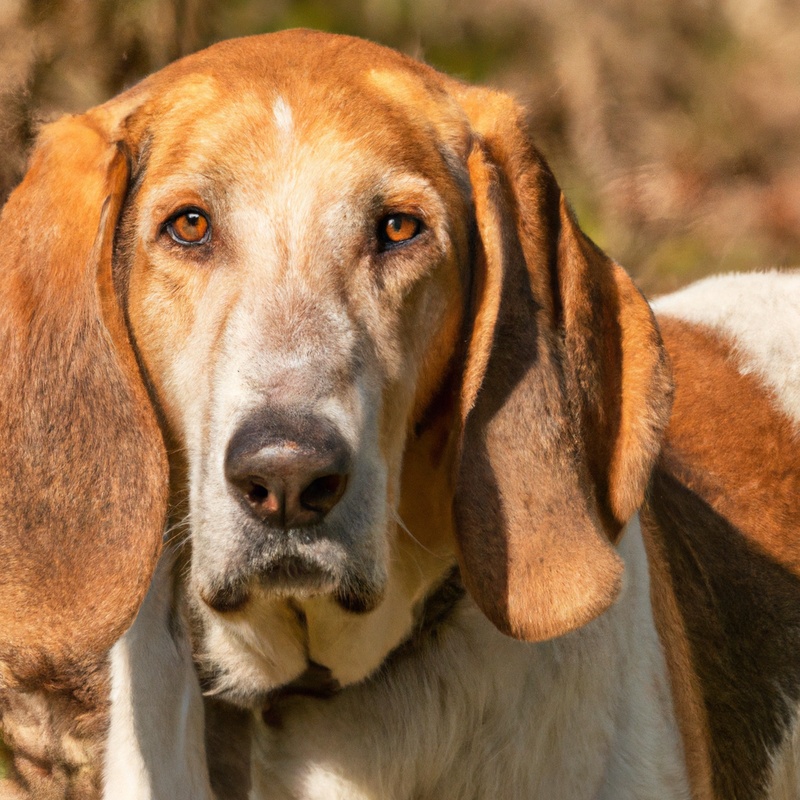What Are The Common Dental Issues In English Foxhounds?
Key Takeaways:
- English Foxhounds are prone to dental problems such as gingivitis and periodontal disease.
- Regular dental care, including brushing their teeth and providing dental chews, is crucial for maintaining their oral health.
- Malocclusions, or improper alignment of the teeth, can be a common issue in English Foxhounds.
- Professional dental cleanings may be necessary to treat and prevent dental issues in this breed.
Are you a proud owner of an English Foxhound? Well then, let’s talk about something that might not be on your mind, but is crucial for your furry friend’s overall health – dental issues.
Trust me, dental problems in our beloved pets can lead to a whole host of other health complications.
As an expert in the field, I’d like to shed light on the common dental issues that English Foxhounds are prone to. From dental plaque and gum disease to misalignment and tooth fractures, we’ll cover it all.
Plus, I’ll share some tips on maintaining good dental health, when to seek veterinary help, and answer some frequently asked questions.
So, keep reading to ensure your four-legged companion has a sparkling smile and a happy, healthy life.
| Dental Issues | Description |
|---|---|
| Tooth decay and cavities | English Foxhounds are prone to tooth decay and cavities due to the buildup of plaque and tartar on their teeth. |
| Gingivitis | Gingivitis, which is the inflammation of the gums, is a common dental issue in English Foxhounds. It can cause red, swollen, and bleeding gums. |
| Periodontal disease | Periodontal disease refers to various infections and inflammations that affect the structures surrounding the teeth, including the gums, alveolar bone, and periodontal ligament. |
| Malocclusion | Malocclusion involves misalignment of the teeth, resulting in an incorrect bite. English Foxhounds can suffer from various types of malocclusion, such as overbite or underbite. |
| Fractured or broken teeth | English Foxhounds may experience fractured or broken teeth, usually due to trauma or chewing on hard objects. |
| Missing teeth | Some English Foxhounds may have missing teeth, which can be a result of genetics, dental disease, or dental extractions. |
| Oral tumors | Oral tumors, including benign and malignant tumors, can occur in the mouths of English Foxhounds. Regular dental check-ups can help in early detection. |
Dental anatomy of English Foxhounds
Teeth structure and composition of English Foxhounds
The teeth of English Foxhounds are similar to those of other dogs, consisting of incisors, canines, premolars, and molars. They have a total of 42 teeth.
The incisors help with biting and grooming, while the canines are used for grasping and tearing.
Premolars and molars aid in chewing and grinding food. The teeth are strong and well-adapted for their carnivorous diet.
Regular dental care, such as brushing and professional cleanings, is important to ensure their dental health.

Importance of dental health in English Foxhounds
Maintaining good dental health is crucial for English Foxhounds. Healthy teeth and gums are important for their overall well-being.
Regular dental care prevents common dental issues such as gum disease, tooth decay, and bad breath.
Brushing their teeth regularly with dog-specific toothpaste is essential. Additionally, providing them with dental treats or chews can help remove plaque and tartar buildup.
Regular dental check-ups by a veterinarian are recommended to catch any potential dental issues early.
Common dental issues in English Foxhounds
Dental plaque and tartar buildup
Dental plaque and tartar buildup can be common dental issues in English Foxhounds.
Plaque is a sticky film that forms on teeth and is caused by bacteria.
If not removed, it can harden into tartar, which can lead to gum disease and other complications.
Regular brushing and professional cleanings are important for preventing plaque and tartar buildup.
Feeding your dog a balanced diet and providing chew toys can also help maintain good dental health.
Gum disease (Periodontal disease)
Gum disease, also known as periodontal disease, is a common dental issue in English Foxhounds.
It occurs when plaque buildup on the teeth and gums leads to inflammation and infection.
Symptoms include red, swollen gums, bad breath, and loose teeth.
Regular dental care, including daily toothbrushing with dog-specific toothpaste and regular professional cleanings, is essential in preventing gum disease.
Feeding a balanced diet and providing chew toys can also help maintain dental health.
If you notice any signs of gum disease, consult with your veterinarian for proper treatment.

Malocclusion (misalignment of teeth)
Malocclusion, also known as misalignment of teeth, is a common dental issue in English Foxhounds.
This condition occurs when the upper and lower teeth do not fit together properly when the mouth is closed.
Malocclusion can lead to various problems for your dog, including difficulty in eating, pain, and even tooth loss.
It is important to consult with a veterinarian if you suspect your English Foxhound may have malocclusion, as they can provide guidance on proper treatment options and dental care.
Regular dental check-ups and professional cleanings can also help prevent and manage malocclusion in your furry friend.
Dental fractures and tooth damage
Dental fractures and tooth damage are common dental issues in English Foxhounds.
This can occur due to various reasons such as trauma, chewing on hard objects, or genetics.
Signs of dental fractures or tooth damage include tooth sensitivity, bleeding gums, bad breath, and difficulty eating.
Regular dental check-ups and proper oral hygiene can help prevent and detect these issues early on.
Chewing on appropriate toys and avoiding very hard treats can also minimize the risk of dental fractures and tooth damage.
Signs and symptoms of dental issues in English Foxhounds
Bad breath (halitosis)
Bad breath, also known as halitosis, can be a common dental issue in English Foxhounds. It can be caused by various factors such as poor oral hygiene, dental infections, or other underlying health conditions.
Signs of bad breath in dogs include a noticeable foul odor coming from their mouth, excessive drooling, and difficulty eating or chewing.
Regular brushing, routine dental check-ups, and a balanced diet can help prevent and treat bad breath in English Foxhounds. If you notice persistent bad breath in your dog, it’s best to consult a veterinarian for proper diagnosis and treatment.
Excessive drooling
Excessive drooling in English Foxhounds can be a sign of dental issues. If you notice your furry friend drooling a lot more than usual, it’s important to pay attention.
Excessive drooling can indicate problems such as infected or cracked teeth, gum disease, or mouth sores.
Keep an eye out for other accompanying symptoms like bad breath, swollen gums, or difficulty eating. If you’re concerned about your English Foxhound’s dental health, it’s best to consult with a veterinarian for a proper diagnosis and treatment plan.
Difficulty chewing or loss of appetite
Difficulty chewing or loss of appetite can be common signs of dental issues in English Foxhounds. You may notice that your dog is struggling to eat or showing less interest in their food.
This could be due to a toothache, gum disease, or other dental problems.
It’s essential to pay attention to any changes in your dog’s eating habits and seek veterinary care if necessary. Regular dental check-ups and maintaining good oral hygiene can help prevent these issues.
Remember, a healthy mouth is crucial for your dog’s overall well-being.
Swollen or bleeding gums
Swollen or bleeding gums can be a sign of dental issues in English Foxhounds. It is important to monitor your dog’s oral health and look out for these symptoms.
If you notice any inflammation or bleeding, it may indicate gum disease or an infection.
Regular brushing and dental check-ups with a veterinarian are essential for maintaining good dental hygiene in your dog.
Oral pain or discomfort
Oral pain or discomfort in English Foxhounds is a common sign of dental issues.
Some signs to watch out for include difficulty eating or reluctance to chew, excessive drooling, pawing at the mouth, bad breath, and swollen or bleeding gums.
You might also notice changes in behavior, such as increased aggression or irritability.
If you notice any of these symptoms, it’s important to consult with a veterinarian for a proper diagnosis and treatment plan.
Regular dental care, including brushing your dog’s teeth and providing dental chew toys, can help prevent oral pain and discomfort.
Preventive measures for maintaining good dental health in English Foxhounds
Regular dental examinations and cleanings
Regular dental examinations and cleanings are essential for maintaining good dental health in English Foxhounds.
During these examinations, a veterinarian will thoroughly inspect your dog’s teeth and gums, looking for any signs of dental issues.
They may also recommend professional cleanings to remove plaque and tartar buildup.
These regular check-ups can help prevent gum disease, tooth decay, and other oral problems.
It’s important to follow your veterinarian’s advice and schedule these examinations and cleanings on a regular basis to keep your English Foxhound’s teeth healthy.
Proper at-home dental care routine
One important aspect of maintaining your English Foxhound’s dental health is establishing a proper at-home dental care routine. Here are some key steps you can take:
- Brush their teeth regularly: Use a dog-specific toothbrush and toothpaste to brush your English Foxhound’s teeth at least 2-3 times a week.
- Provide dental chews and toys: Chewing on appropriate dental chews or toys can help remove plaque and keep their teeth clean.
- Use dental rinses or sprays: These products can help reduce bacteria in your dog’s mouth and freshen their breath.
- Regular veterinary check-ups: Schedule routine dental check-ups with your vet to identify any underlying dental issues and address them early on.
Remember, a good at-home dental care routine is essential for your English Foxhound’s overall dental health and can prevent many common dental problems!
Appropriate diet and chew toys
For maintaining good dental health in English Foxhounds, an appropriate diet and the use of chew toys are essential. A diet consisting of high-quality, dental-friendly kibble can help reduce tartar buildup.
Chew toys, specifically designed for dogs, can help promote dental hygiene by controlling plaque and tartar.
Opt for toys that are safe and durable, like rubber or nylon chew toys. Regularly offering these items to your English Foxhound can significantly contribute to maintaining their dental health.
When to consult a veterinarian for dental issues in English Foxhounds
Importance of professional dental check-ups
Regular professional dental check-ups for your English Foxhound are essential to maintain their oral health. These check-ups help identify early signs of dental issues such as gum disease, tooth decay, or infections.
A veterinarian can perform a thorough examination, including dental x-rays if needed, to catch any underlying problems.
They can also professionally clean your dog’s teeth, removing plaque and tartar buildup that can lead to more serious problems down the line. By scheduling regular dental check-ups, you can ensure that your English Foxhound’s teeth stay healthy and prevent any potential pain or discomfort they may experience.
Seeking veterinary help for persistent oral problems
If your English Foxhound is experiencing persistent oral problems, it’s important to seek veterinary help. A vet can diagnose the underlying issue and provide appropriate treatment.
They may perform a thorough oral examination, including X-rays if needed.
Your vet might recommend professional dental cleanings, extractions, or other interventions to address the problems. Remember, only a veterinarian can properly assess and treat your dog’s oral health issues.
So, don’t hesitate to reach out for professional help.
Importance of early intervention
Early intervention is crucial when it comes to addressing dental issues in English Foxhounds.
By identifying and treating problems at an early stage, you can prevent them from becoming more serious and causing discomfort for your furry friend.
It’s important to consult a veterinarian as soon as you notice any signs of dental issues, such as bad breath, difficulty eating, or excessive drooling.
Remember, taking prompt action can help maintain your English Foxhound’s oral health and overall well-being.
Frequently Asked Questions (FAQs) about dental issues in English Foxhounds
How often should I brush my English Foxhound’s teeth?
For optimal dental health, brush your English Foxhound’s teeth at least two to three times a week.
This will help prevent tartar buildup, gum disease, and bad breath.
Use a dog-friendly toothbrush and toothpaste, and gradually introduce the brushing routine to your dog to make it more comfortable.
Regular dental check-ups with the veterinarian are also recommended.
Can dental problems in English Foxhounds be hereditary?
Dental problems in English Foxhounds can indeed be hereditary.
Certain dental issues, such as malocclusions (misalignment of the teeth), overcrowding, and tooth decay, can be passed down from one generation to the next.
This means that if a dog’s parent has had dental problems, there is a higher likelihood of the offspring experiencing similar issues.
To ensure the dental health of English Foxhounds, it is important to consider their breeding history and consult with a veterinarian for appropriate preventive measures and dental care.
What are some signs that my English Foxhound has a dental issue?
Signs that your English Foxhound may have a dental issue include:
- Bad breath: If your dog’s breath consistently smells foul, it could be a sign of dental problems such as tooth decay or gum disease.
- Difficulty eating: If your dog is having trouble chewing or avoiding certain types of food, it could indicate dental pain or discomfort.
- Excessive drooling: Increased drooling can be a sign of dental problems, as it may indicate inflammation or infection in the mouth.
- Swollen or bleeding gums: Red, inflamed gums or bleeding while chewing can be an indication of gum disease or other dental issues.
- Pawing at the mouth: If your English Foxhound is pawing at their mouth or face, it could be a sign of dental pain or discomfort.
- Loss of appetite: Dental issues can cause pain when eating, leading to a decreased appetite or refusal to eat altogether.
If you notice any of these signs, it’s best to consult your veterinarian for a thorough examination and appropriate treatment. Regular dental check-ups and dental hygiene practices at home can help prevent dental problems in your English Foxhound.
Are there any specific toys that can help clean my English Foxhound’s teeth?
Yes, there are specific toys that can help clean your English Foxhound’s teeth.
Look for toys that are designed to promote dental health, such as chew toys with ridges or bumps that can help remove plaque and tartar buildup.
Dental ropes and rubber dental toys can also be beneficial for your dog’s oral hygiene.
Just make sure to choose toys that are the appropriate size and durability for your English Foxhound, and supervise them while they play with these toys to ensure safety.
Is anesthesia necessary for dental procedures in English Foxhounds?
Yes, anesthesia is necessary for dental procedures in English Foxhounds. It helps to ensure the comfort and safety of the dog during the procedure.
Anesthesia allows the veterinarian to clean the teeth thoroughly, perform extractions if necessary, and address any other dental issues.
It also prevents the dog from feeling pain or becoming overly stressed during the procedure. Your veterinarian will determine the appropriate anesthesia protocol based on your dog’s individual needs and health condition.
Final Verdict
Maintaining good dental health in English Foxhounds is crucial for their overall well-being.
Dental plaque and tartar buildup, gum disease, malocclusion, and tooth fractures are common issues to watch out for.
Signs such as bad breath, excessive drooling, difficulty chewing, and swollen gums should not be ignored.
Regular dental exams, at-home care, a proper diet, and appropriate chew toys are essential preventive measures.
Timely veterinary intervention is necessary, as early detection and treatment can prevent further complications.
By prioritizing dental health, we can ensure our English Foxhounds lead healthy and happy lives.








